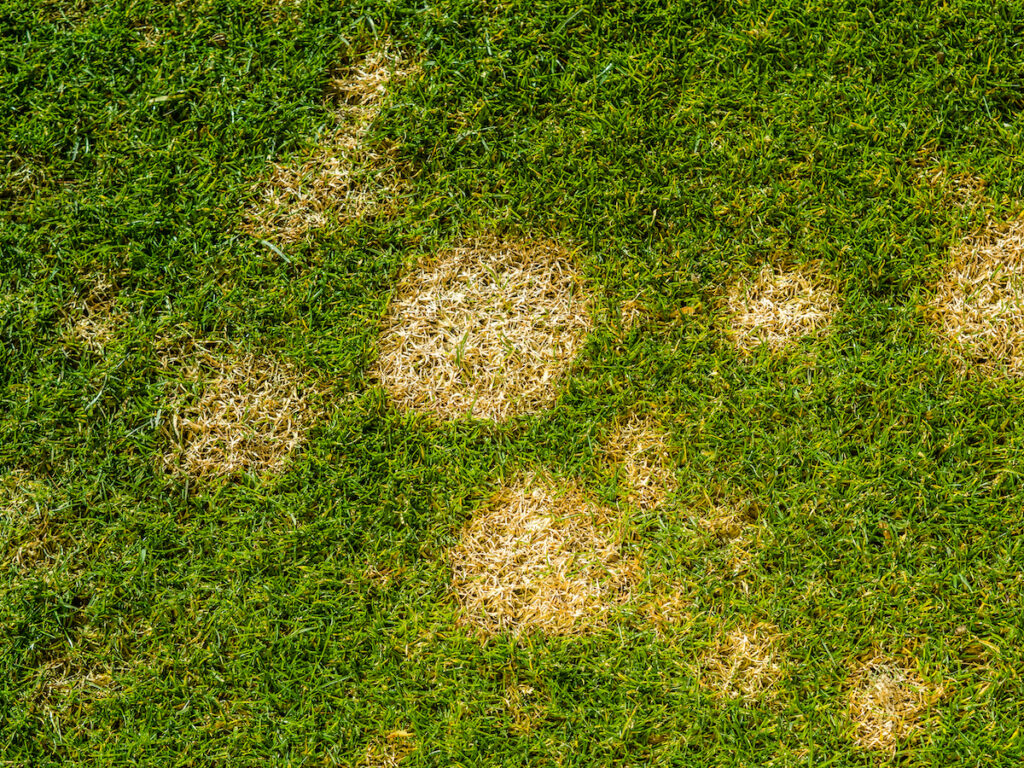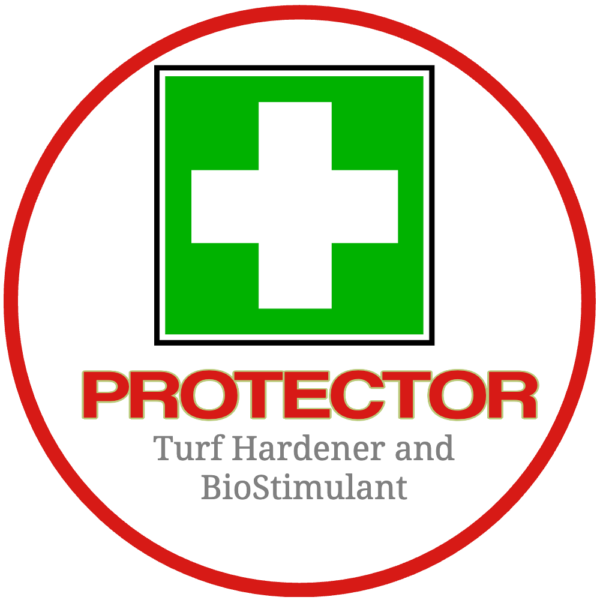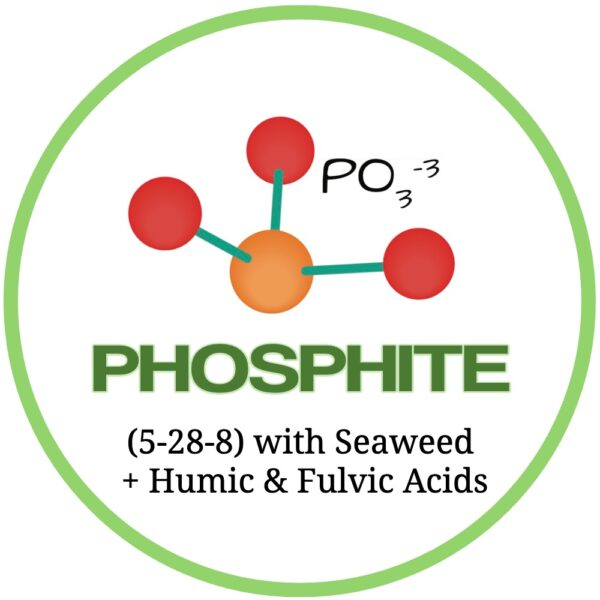Fusarium Patch (Microdochium nivale) has become the winter scourge of too many bowling greens, picking off stressed turf when conditions are at their toughest. But the truth is, this disease isn’t just about cool, damp weather. It’s thriving because our greens have become the perfect environment for it.
Over the last few decades, routine applications of fungicides, high-salt synthetic fertilisers and ever-increasing topdressings of sand have left many UK greens biologically bankrupt. I see it time and again in soil analysis reports: textural classification coming back as just Sand. Very little in the way of silt or clay and sparse organic matter. In other words, the soil is inert and has limited ability to provide an environment for the beneficial soil microbes our fine perennial grasses need to help them thrive.
In that close to lifeless environment, there’s nothing left to fight Fusarium. Beneficial fungi, bacteria and natural checks on pathogen populations have been wiped out. The rootzone has become a dry, lifeless desert with barely enough structure to hold water, let alone support turf through the rigours of winter.
If you’ve read my article The Real Cause of Fusarium and Why Fungicides Always Fail, you’ll know that this is no accident. It’s the result of a long-standing obsession with symptom chasing, simply waiting for and then treating the visible disease, while ignoring the conditions that allow it to thrive.
It’s time to reverse that trend.
The Smarter Autumn/Winter Strategy: Armour the Plant, Activate the Soil
This season, I’m recommending a powerful tank-mix of two products that work with the plant, not against it, to build genuine resilience:
✅ Protector (10L)
A highly concentrated cold-processed Ascophyllum nodosum extract enriched with complexed iron, copper, amino acids, vitamins, and trace minerals. This isn’t just another seaweed, it’s a biostimulant and turf hardener in one.
- The iron boosts colour and photosynthesis.
- The copper enhances natural disease resistance pathways.
- The full mineral spectrum strengthens the plant’s own defence system, without triggering soft, lush growth.
Protector gives your turf what it needs to recover from wear, survive stress, and resist infection, without the collateral damage of synthetic fertilisers or fungicides.
✅ Bowls Central Phosphite (5‑28‑8)
Phosphite is a different form of phosphorus that plants absorb quickly and use to activate systemic defence responses. This foliar formulation combines:
- Phosphite and phosphate to stimulate both plant growth and disease resistance.
- Seaweed, humic and fulvic acids to support root development and microbial activity.
- Potassium, essential for winter hardiness and metabolic function.
It’s well-supported in the literature that phosphite enhances Systemic Acquired Resistance (SAR) and Induced Systemic Resistance (ISR), helping the plant mount a stronger defence against pathogens like Fusarium.
Research‑Backed Benefits of Phosphite Against Fusarium and Related Pathogens
Disease Suppression via Systemic Resistance Activation
Phosphite (the phosphonate form of phosphorus) is well-known to induce Systemic Acquired Resistance (SAR). This primes turf to mobilise its innate defences, helping guard against Fusarium and other pathogens. growertalks.com
Direct and Indirect Modes of Action
- Direct effect: Phosphite disrupts phosphorus metabolism in pathogens like oomycetes and fungi, interfering with their energy systems.
- Indirect effect: By mimicking stress signals, it triggers plants to upregulate defensive compounds and genes. grigg.co
Fusarium Suppression Evidence
Laboratory and greenhouse trials report suppression of Fusarium wilt and similar pathogens when treated with phosphite, demonstrating both direct efficacy and enhanced host resistance. PMCResearchGate
Effective Uptake and Retention in Turf
Foliar-applied phosphite is rapidly absorbed and moves throughout the plant via xylem and phloem—what researchers term symplastic ambimobility. However, it does not convert to usable phosphate inside cool-season turf, so any quality improvements stem from disease suppression rather than fertilisation. USGA
Easy Tank Mix for Autumn and Winter
When applied together, Protector and Phosphite form a complementary system:
- Protector hardens and nourishes the turf with trace elements and antioxidants.
- Phosphite primes the immune system and disrupts pathogen development.
- Both contain biostimulants that stimulate microbial life, not suppress it.
They mix cleanly in the tank, are easy to apply, and can be sprayed every 3–4 weeks through autumn and winter to maintain defence readiness without overloading the plant with nitrogen or salt.
The Bottom Line
This isn’t a chemical symptom stopper. It’s another nudge in the right direction toward sbetter turf and soil health. By using Protector + Phosphite, you’re not just reducing the likelihood of disease, you’re starting the long-overdue process of rebuilding your green’s natural defences.
Fusarium will keep coming back until we stop fighting symptoms and start restoring the health of the soil. This tank-mix is one of the most effective, affordable and environmentally sound ways to do just that.
🔸 Recommended Mix for Autumn Disease Pressure (Fusarium Prevention)
For a 1,500 m² bowling green, under visible disease risk or known historical Fusarium pressure, go with:
🔗 Protector – Natural Turf Hardener (10L)
🔗 Phosphite 5‑28‑8 – Foliar Biostimulant for Fine Turf
Application Rate
- Protector: 1.5 L
- Phosphite: 0.5 L (500 mL)
- In 50–75 L of water, depending on your sprayer setup
- Suggested application Frequency: Monthly from October to March
Protector 10 Litre
- Turf Hardener and autumn/winter biostimulant
- Promotes stress-resistant, healthy plants
- Hardens the grass against wear and enhances disease resistance
- Reduces the need for inorganic fertilisers
- Used in times of stress to re-balance the trace elements within the plant
Phosphite (5-28-8) with Seaweed + Humic & Fulvic Acids (10 Litre)
High-analysis foliar phosphite for fine turf. Half the P as phosphate for energy and rooting, half as phosphite to prime natural stress-defence pathways. Fortified with seaweed plus humic & fulvic acids for efficient uptake.
- Analysis: 5-28-8 + seaweed + humic & fulvic
- Drives root growth and supports energy storage (ATP)
- Primes plant defences for seasonal stress performance



